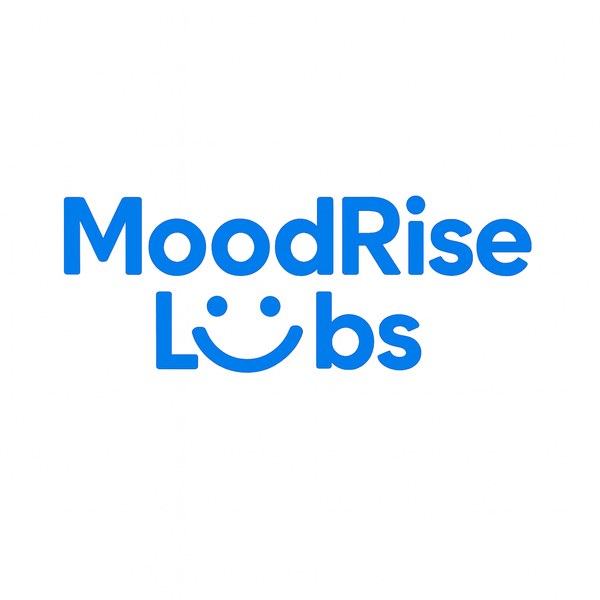The Fight-or-Flight Response: Why Your Body Overreacts
Introduction
We’ve all felt it—the racing heart, shallow breath, sweaty palms, and the sudden urge to run away from a stressful situation. This powerful surge of physical and mental energy is known as the fight-or-flight response. Designed by evolution to help us survive danger, this response mobilizes every system in the body to fight a threat or flee from it.
But in today’s world, many of the threats we face aren’t predators in the wild—they’re job interviews, relationship conflicts, financial worries, or panic triggers. For some people, the fight-or-flight system becomes overactive, reacting to non-life-threatening stressors as if they were mortal dangers. This overreaction can fuel panic attacks, chronic anxiety, and even long-term health issues.
This article explores why the fight-or-flight response sometimes goes into overdrive, how neurotransmitters and hormones are involved, and what you can do—through supplements, breathwork, therapy, and lifestyle changes—to calm the body’s survival system.
Looking for online therapy for people with Anxiety? Click Here.
🧠 What Is the Fight-or-Flight Response?

The fight-or-flight response is a stress reaction controlled by the autonomic nervous system. When the brain perceives danger, it triggers a cascade of changes to prepare the body for survival.
Key features include:
Adrenaline release → speeds up heart rate and blood flow.
Cortisol surge → mobilizes energy by increasing glucose.
Dilated pupils → better vision in low light.
Faster breathing → more oxygen for muscles.
Digestive slowdown → energy diverted away from non-essential processes.
This rapid activation can save your life in real emergencies. But when the system becomes hyperreactive, everyday stressors trigger the same powerful response.
⚡ Why the Body Overreacts
A Hypersensitive Amygdala
The amygdala is the brain’s fear center. In some people, it becomes overactive, interpreting minor stressors as life-threatening.
Genetic Vulnerability
Some people inherit a more reactive stress system. Genes that regulate cortisol, serotonin, and GABA can predispose individuals to anxiety and panic.
Trauma and Conditioning
Early trauma can prime the nervous system to see threats everywhere. For example, someone with a traumatic childhood may have a nervous system stuck in high alert.
Chronic Stress
Daily stress without recovery keeps cortisol and adrenaline elevated, lowering the threshold for fight-or-flight activation.
Catastrophic Thinking
Misinterpreting normal sensations (like a racing heart) as dangerous can trigger a self-reinforcing loop: sensation → fear → stronger fight-or-flight response → panic attack.
🧬 The Role of Neurotransmitters and Hormones
The fight-or-flight system is powered by a network of chemical messengers.
Norepinephrine and Adrenaline (Epinephrine): Trigger immediate alertness, increased heart rate, and energy mobilization.
Cortisol: Sustains the response over minutes to hours, ensuring energy availability.
GABA: Acts as a brake; low levels make it harder to calm down after stress.
Serotonin: Helps regulate fear and anxiety; imbalances heighten reactivity.
Dopamine: Involved in motivation and focus during stress.
An overactive system often reflects too much norepinephrine/adrenaline and too little GABA/serotonin.
🌪️ When Fight-or-Flight Becomes Panic
A panic attack is essentially the fight-or-flight response misfiring. Triggers can be external (like crowded spaces) or internal (like noticing a faster heartbeat). Once activated, the system snowballs:
Sensation: Heartbeat speeds up.
Interpretation: “I’m having a heart attack.”
Reaction: Fear amplifies adrenaline release.
Full panic: Shortness of breath, dizziness, shaking, sense of doom.
What should be a brief survival response turns into a frightening experience that seems uncontrollable.
🥗 Nutrition for Calming Overreaction
Food plays a powerful role in regulating the fight-or-flight system.
Foods That Help:
Leafy greens & nuts (magnesium): Support GABA and calm the nervous system.
Fatty fish & chia seeds (omega-3s): Reduce inflammation and improve serotonin signaling.
Protein-rich foods: Provide amino acids for neurotransmitter synthesis (tryptophan → serotonin, glutamine → GABA).
Complex carbs: Stabilize blood sugar and prevent cortisol spikes.
Fermented foods: Support the gut-brain axis and serotonin production.
Foods to Limit:
Caffeine ☕: Can mimic anxiety symptoms.
Sugar 🍩: Blood sugar crashes fuel adrenaline.
Alcohol 🍷: Short-term calm but worsens cortisol long-term.
🌿 Supplements That Support Balance

Magnesium Glycinate
Relaxes muscles, lowers cortisol.
Boosts GABA activity.
L-Theanine
Found in green tea.
Promotes alpha brain waves and calm focus.
Ashwagandha
Adaptogen proven to lower cortisol.
Reduces overall stress reactivity.
Rhodiola Rosea
Enhances stress resilience.
Calms adrenaline-driven fatigue.
Omega-3 Fatty Acids
Improve neurotransmitter fluidity.
Lower systemic inflammation tied to stress.
Phosphatidylserine
Reduces post-stress cortisol.
Supports memory and focus under pressure.
Looking for supplements for people with Anxiety? Click here.
🌬️ Breathwork to Calm the Survival System
Breathing is the fastest tool to regulate the fight-or-flight response because it directly affects the vagus nerve.
Physiological Sigh 😮💨: Two short inhales, one long exhale → lowers cortisol quickly.
Box Breathing ⬛ (4-4-4-4): Builds nervous system control.
Resonance Breathing 🌊 (5–6 breaths per minute): Improves heart rate variability and calm.
Practicing breathwork daily strengthens the body’s ability to recover from stress.
Want to try Breathwork? Click Here.
🛋️ Therapy: Retraining the Nervous System
Therapy doesn’t just change thoughts—it rewires how the brain and body respond to stress.
Cognitive Behavioral Therapy (CBT): Helps challenge catastrophic interpretations.
Exposure Therapy: Teaches the nervous system that feared sensations are safe.
Somatic Experiencing: Releases trauma stored in the body.
Mindfulness-Based Therapy: Increases tolerance for sensations without spiraling into panic.
When combined with supplements and breathwork, therapy helps make the fight-or-flight system less reactive.
Looking for online therapy for people with Anxiety? Click Here.
🕒 A Daily Routine for Nervous System Balance
🌞 Morning
Hydrate with water + minerals.
5 minutes resonance breathing.
Protein-rich breakfast with omega-3s.
Supplements: magnesium, ashwagandha.
🌤️ Midday
Balanced lunch.
L-theanine before a stressful event.
10-minute walk outside.
🌙 Evening
Herbal tea (valerian, lemon balm).
Gentle yoga or stretching.
Magnesium before bed.
7–9 hours of quality sleep.
🚫 Mistakes That Keep You Stuck in Fight-or-Flight
Drinking too much caffeine.
Skipping meals, causing blood sugar swings.
Avoiding all stress (reinforces fear).
Over-exercising (chronic high cortisol).
Poor sleep hygiene.
Breaking these patterns is essential for nervous system reset.
🌟 Long-Term Benefits of Calming the System
2–4 Weeks: Less reactivity to daily stress.
6–8 Weeks: Improved sleep, mood stability.
3–6 Months: Nervous system retrains itself, panic attacks become rare.
12 Months: Resilient calm becomes your baseline.
🎤 Conclusion
The fight-or-flight response is a survival gift—but in modern life, it can become an overreactive burden. When minor stressors trigger the same reaction as mortal threats, the nervous system becomes locked in high alert, fueling panic and anxiety.
By understanding the role of neurotransmitters, hormones, and the autonomic nervous system, you can learn to regulate this response. Supplements, nutrition, breathwork, and therapy all provide tools to calm the system and retrain the body to respond proportionately.
When your fight-or-flight response is in balance, you don’t just survive stress—you thrive in it.
📚 References
Sapolsky, R. M. (2004). Why Zebras Don’t Get Ulcers. Holt Paperbacks.
Chrousos, G. P. (2009). Stress and disorders of the stress system. Nature Reviews Endocrinology.
Nemeroff, C. B. (2003). Role of neurotransmitters in anxiety and panic. Journal of Clinical Psychiatry.
Kimura, K., et al. (2007). L-theanine and stress response. Biological Psychology.
Panossian, A., & Wikman, G. (2010). Adaptogens and stress. Current Clinical Pharmacology.
Boyle, N. B., et al. (2017). Magnesium supplementation in stress. Nutrients.
Hofmann, S. G., et al. (2010). CBT for anxiety disorders. Journal of Consulting and Clinical Psychology.
Brown, R. P., & Gerbarg, P. L. (2005). Breathing practices for stress regulation. Journal of Alternative and Complementary Medicine.
Cryan, J. F., & Dinan, T. G. (2012). Stress and neurotransmitter function. Nature Reviews Neuroscience.
Walker, M. (2017). Why We Sleep. Scribner.
Related Posts
-

Supplements for Staying Present and Grounded
L-Theanine is nature’s calm focus enhancer 🍃. Derived from green tea, it promotes relaxation without drowsiness by balancing GABA, serotonin, and dopamine. Learn how this amino acid supports smooth focus, emotional balance, and mindful presence in daily life.
-

Supplements That Support Emotional Openness
Emotional openness starts in the body 🌿. When your nervous system feels safe, your heart can express freely. Learn how supplements like magnesium, Ashwagandha, and L-theanine support calm connection, balanced emotions, and the courage to stay authentically open.
-
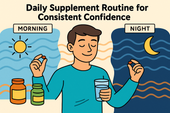
Daily Supplement Routine for Consistent Confidence
Confidence is built through rhythm, not luck 🌿. A daily supplement routine can help your energy, mood, and focus stay balanced from morning to night. Learn how adaptogens, magnesium, and B vitamins work together to create steady calm and lasting self-assurance.
-
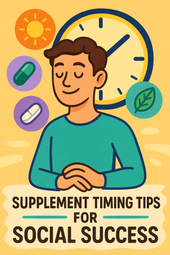
Supplement Timing Tips for Social Success
Social confidence has its own rhythm 🌿. When you time your supplements to match your body’s natural energy cycles, calm and focus align effortlessly. Learn how magnesium, L-theanine, and adaptogens can help you stay grounded, charismatic, and fully present at just the right moment.
-
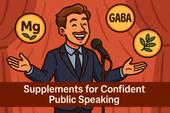
Supplements for Confident Public Speaking
Public speaking confidence begins with biology 🎤🌿. When your nervous system is calm and your neurotransmitters are balanced, your voice, focus, and presence flow naturally. Learn how supplements like magnesium, GABA, and adaptogens can align your body’s chemistry with the calm clarity you need to speak authentically.
-

Travel-Friendly Supplements for On-the-Go Confidence
Magnesium is the ultimate travel mineral for calm and balance ✈️🌿. It relaxes the nervous system, eases stress from jet lag or fatigue, and supports muscle and mental recovery. Discover how this essential nutrient keeps you centered, focused, and energized wherever your journey takes you.
-

Supplements for Confident Video Calls
Magnesium is the mineral that brings calm to both body and mind 🌿. It supports relaxation, better sleep, and a stable mood by regulating cortisol and soothing the nervous system. Learn how magnesium supplements can restore balance, reduce anxiety, and help you feel centered under stress.
-

Ashwagandha for Calming the Stress Response
Ashwagandha helps your body remember how to relax 🌿. As one of the most trusted adaptogens, it calms the stress response by lowering cortisol, soothing the nervous system, and restoring natural energy balance. Learn how this ancient herb promotes deeper sleep, emotional steadiness, and resilience in today’s high-stress world.
-

How GABA Supplements Can Help You Feel Grounded
GABA is the brain’s natural calm signal 🌿. When life feels overwhelming, this neurotransmitter helps quiet mental noise, relax muscles, and restore emotional balance. Learn how GABA supplements can calm the nervous system, reduce anxiety, and help you feel grounded in your body again.
-
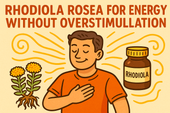
Rhodiola Rosea for Energy Without Overstimulation
Rhodiola rosea offers a rare kind of energy — one rooted in calm, not chaos 🌿. Known as the golden root, this adaptogen enhances endurance, focus, and mood by balancing cortisol and supporting the nervous system. Discover how Rhodiola restores natural vitality without the overstimulation of caffeine or stress-driven fatigue.
-
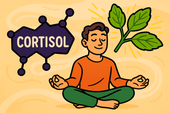
Holy Basil and Cortisol Control
Holy basil, or Tulsi, is one of nature’s most powerful adaptogens 🌿. Revered in Ayurvedic medicine for centuries, it helps balance cortisol, calm the mind, and protect the body from stress. Learn how holy basil restores hormonal harmony, supports energy, and promotes emotional resilience in a fast-paced world.
-
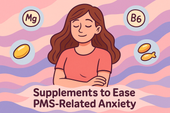
Supplements to Ease PMS-Related Anxiety
Hormones are the body’s messengers — guiding mood, energy, metabolism, and balance. 🌿 When these chemical signals flow in harmony, life feels stable and calm. Learn how nutrients, sleep, and stress management help keep hormonal communication clear, supporting emotional steadiness and overall vitality.
-
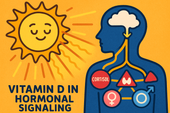
The Role of Vitamin D in Hormonal Signaling
Testosterone is more than a hormone — it’s a signal of strength, motivation, and vitality 💪. Learn how this key molecule shapes energy, mood, muscle growth, and focus in both men and women. Discover how nutrition, vitamin D, and minerals like zinc and magnesium support healthy testosterone signaling for balanced power and performance.
-

Magnesium for Hormonal and Nerve Function
Magnesium is the mineral that connects calm and vitality ⚡. It fuels nerve transmission, supports hormonal balance, and restores the body’s ability to relax under stress. Learn how magnesium strengthens communication between the nervous and endocrine systems, stabilizing cortisol, thyroid, and reproductive hormones for true equilibrium.
-

Zinc and Its Role in Hormonal Stability
Zinc is one of the body’s most powerful regulators ⚖️—a trace mineral that keeps hormones, metabolism, and energy in perfect rhythm. Learn how zinc supports testosterone, thyroid function, cortisol balance, and emotional stability while protecting against modern stress and deficiency. Discover why restoring zinc can help your body feel grounded, focused, and hormonally resilient.
-
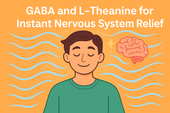
GABA and L-Theanine for Instant Nervous System Relief
When stress hits, your nervous system needs relief — not more stimulation 🌿. Discover how GABA and L-theanine work together to calm the body, quiet racing thoughts, and restore inner balance. Learn the science behind these natural compounds that ease tension, support emotional stability, and bring instant peace without sedation.
-
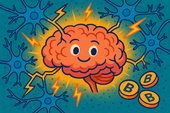
B-Vitamins for Faster Nerve Communication
Vitamin B1, or thiamine, is your brain’s ignition key 🔑—turning food into cellular energy and powering rapid nerve signaling. Discover how this essential nutrient fuels neurotransmitter activity, supports focus and coordination, and prevents fatigue or mental fog. Learn why maintaining optimal thiamine levels keeps your nerves firing fast and your mind sharp.
-

Supplements That Help You Stay Alert Without Anxiety
L-theanine is nature’s secret for calm focus and balanced energy 🌿. Found in green tea, this gentle amino acid promotes relaxation, supports alpha brain waves, and helps you stay alert without stress or grogginess. Discover how L-theanine can enhance focus, improve sleep quality, and restore mental calm in a fast-paced world.
-
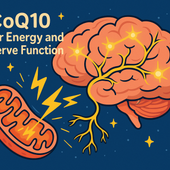
CoQ10 for Energy and Nerve Function
CoQ10 powers every cell in your body—from your heart to your brain ⚡. Learn how this essential compound fuels mitochondria, boosts nerve function, and protects your brain from oxidative stress. Discover how supplementing with CoQ10 can restore energy, sharpen focus, and support long-term neurological vitality.
-
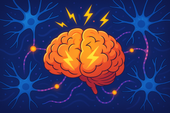
Supplements That Support Nerve Signaling for Mental Energy
Your brain’s electrical network depends on magnesium—one of the most vital minerals for nerve signaling, calm focus, and steady mental energy ⚡. Learn how this essential nutrient powers neurotransmission, supports relaxation, and helps protect your nervous system from stress overload—so your mind feels balanced, alert, and resilient every day.
-
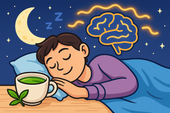
L-Theanine for Sleep Without Grogginess
L-theanine offers a natural path to better sleep—without the next-day fog. 🌙 Found in green tea, this gentle amino acid calms the mind, lowers stress hormones, and promotes deep relaxation without sedation. Learn how L-theanine balances your brainwaves, reduces nighttime anxiety, and helps you wake up refreshed, alert, and clear-minded.
-

Supplements to Support the Circadian Rhythm
Your body’s natural clock depends on more than just sunlight—it also relies on key nutrients to stay in sync. 🌞🌙 Discover the best supplements to support your circadian rhythm, from melatonin and magnesium for deep sleep to vitamin D and adaptogens for morning energy. Learn how to realign your internal clock for better rest, sharper focus, and stable mood every day.
-

Melatonin and Cortisol: The Night vs. Day Hormones
Melatonin and cortisol are your body’s night-and-day hormones—one helping you drift into deep sleep, the other powering your alertness each morning. 🌙☀️ Learn how these two forces work together to regulate your energy, mood, and recovery. Discover how modern stress, artificial light, and poor routines can throw them off balance—and how to naturally reset your rhythm for calm nights and focused days.
-

Supplements for Deeper Sleep and Nervous System Reset
Struggling to sleep even when you’re exhausted? 🌙 Discover how to reset your nervous system and achieve deeper, more restorative rest with the right blend of supplements, breathwork, and therapy. From magnesium and L-theanine to slow exhalations and somatic healing, this guide helps you rebuild your body’s natural rhythm of calm and recovery—so you can wake up truly renewed.
-
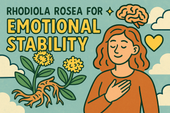
Rhodiola Rosea for Emotional Stability: Finding Balance Through Resilience
Stress is the body’s natural alarm system — useful in bursts, but draining when it never turns off. Learning to regulate it helps restore calm focus, emotional balance, and physical vitality. 🌿💫
-
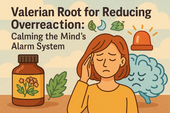
Valerian Root for Reducing Overreaction: Calming the Mind’s Alarm System
GABA is the brain’s natural brake pedal — calming overstimulation and helping you think clearly under stress. When balanced, it brings a sense of inner peace, emotional control, and focus. 🌿🧠💫
-

Supporting Adrenal Health for a Steadier Mood
Cortisol is the body’s built-in stress alarm — essential in short bursts but harmful when constantly elevated. Learning to balance it naturally restores calm, focus, and emotional stability. 🌿⚖️
-
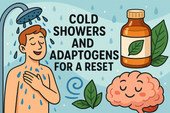
Cold Showers and Adaptogens for a Reset: Reclaiming Energy, Calm, and Control
Adaptogens help the body adapt to stress, restoring calm energy and balance. These ancient herbs strengthen resilience, regulate mood, and support focus — helping you stay grounded through life’s ups and downs. 🌿💫
-
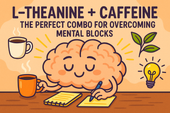
L-Theanine + Caffeine: The Perfect Combo for Overcoming Mental Blocks
Neurotransmitters are the brain’s messengers — tiny molecules that shape how we think, feel, and focus. When they’re in balance, we experience calm energy, clear thinking, and emotional harmony. 🌿🧠✨
-

How Magnesium Supports Focus and Reduces Procrastination Fatigue
Magnesium is the quiet mineral behind mental clarity and steady focus. By calming the nervous system and restoring cellular energy, it helps transform fatigue and overthinking into calm, productive flow. 🌿⚡🧠
-

B Vitamins for Beating Procrastination and Boosting Energy
Procrastination isn’t just a mindset — it’s often a signal of low energy and nutrient depletion. B vitamins recharge the brain’s motivation circuits, boosting focus, clarity, and the drive to take action. 🌿⚡🧠
-
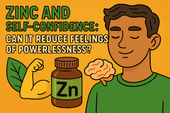
Zinc and Self-Confidence: Can It Reduce Feelings of Powerlessness?
Zinc isn’t just a mineral — it’s the foundation of emotional strength. By balancing neurotransmitters and calming the nervous system, it helps you feel more centered, assertive, and confident from the inside out. 🌿💪
-
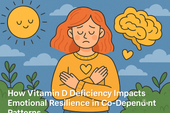
How Vitamin D Deficiency Impacts Emotional Resilience in Co-Dependent Patterns
Co-dependency is the emotional tug-of-war between connection and self-loss — a pattern born from giving too much and receiving too little. Learning to untangle this dynamic allows for real love rooted in balance, not fear. 🌿💛
-
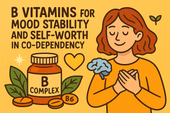
B Vitamins for Mood Stability and Self-Worth in Co-Dependency
Vitamin B1, or thiamine, powers both the body and the brain — fueling focus, energy, and emotional clarity. Supporting your nervous system with this essential nutrient helps restore calm and mental resilience. 🌿⚡🧠
-
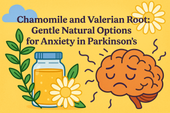
Chamomile and Valerian Root: Gentle Natural Options for Anxiety in Parkinson’s
Anxiety often feels like a storm inside the mind — racing thoughts, tightness, and unease that make it hard to focus or rest. But learning to understand and calm that inner storm opens the door to peace and emotional balance. 🌿🧠
-
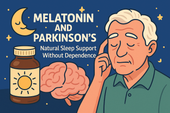
Melatonin and Parkinson’s: Natural Sleep Support Without Dependence
Melatonin is the body’s natural sleep hormone — guiding your mind into rest and your body into recovery. Supporting its natural rhythm can improve sleep quality, mood, and overall health without dependence. 🌙🧠
-
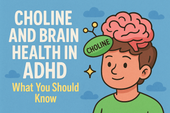
Choline and Brain Health in ADHD: What You Should Know
Inflammation can quietly affect both the body and mind, disrupting focus, mood, and energy. Understanding how it works — and how to calm it — is key to restoring balance, clarity, and long-term health. 🌿🧠
-
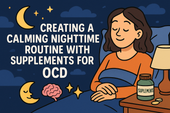
Creating a Calming Nighttime Routine with Supplements for OCD
Sleep is the brain’s nightly repair ritual — a time when emotional chaos settles and clarity returns. Prioritizing deep rest restores focus, calm, and resilience, helping both the body and mind recover naturally. 🌙🧠
-
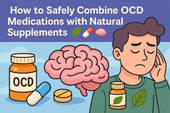
How to Safely Combine OCD Medications with Natural Supplements
Supplements bridge the gap between nutrition and mental wellness — supporting focus, calm, and energy from within. The right combination of nutrients can help balance mood, sharpen the mind, and restore long-term resilience. 🌿🧠
-
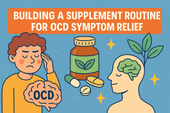
Building a Supplement Routine for OCD Symptom Relief
OCD can feel like being trapped in your own thoughts — a battle between control and chaos. Understanding the science behind these cycles is the first step toward breaking free and finding calm within the mind. 🌿🧠
-
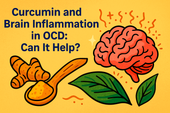
Curcumin and Brain Inflammation in OCD: Can It Help?
Inflammation doesn’t just affect the body — it can silently influence the brain, fueling anxiety, fatigue, and mental fog. By understanding how inflammation works, we can learn how to calm the nervous system and restore inner balance. 🌿🧠
-
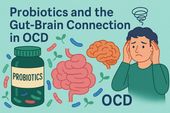
Probiotics and the Gut-Brain Connection in OCD
Serotonin, often called the “feel-good” chemical, shapes our mood, focus, and emotional balance. By keeping this neurotransmitter in harmony, we support calm thinking, better sleep, and greater mental resilience. 🌿🧠
-

B Vitamins and OCD: Supporting Energy and Neurotransmitter Balance
OCD isn’t just about habits — it’s about the brain’s struggle to find control in chaos. Understanding the neurological roots behind intrusive thoughts can help replace fear with clarity and guide healing toward calm awareness. 🌿🧠
-
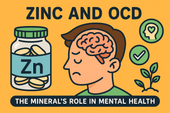
Zinc and OCD: The Mineral’s Role in Mental Health
Zinc is more than a trace mineral — it’s a key regulator of mood, memory, and emotional balance. By stabilizing neurotransmitters like serotonin and glutamate, zinc helps calm obsessive thought patterns and supports overall mental clarity. 🌿🧠
-
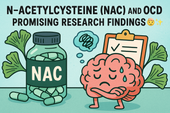
N-Acetylcysteine (NAC) and OCD: Promising Research Findings
Antioxidants act as the body’s natural defense system, neutralizing free radicals that damage brain cells and worsen anxiety or fatigue. Supporting antioxidant balance with nutrition and supplements helps protect focus, memory, and emotional stability. 🌿🧠
-
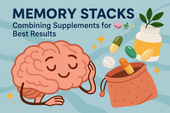
Memory Stacks: Combining Supplements for Best Results
Memory weaves the story of who we are — connecting past, present, and future through every experience we store and recall. Strengthening memory means nurturing the brain’s energy, balance, and emotional calm so learning becomes effortless. 🌿🧠
-
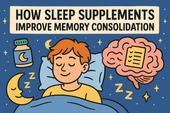
How Sleep Supplements Improve Memory Consolidation
Stress can cloud thinking, disrupt sleep, and weaken memory — but understanding its effects on the brain is the first step toward calm. By learning to regulate the nervous system, we can protect focus, energy, and emotional balance. 🌿🧠
-
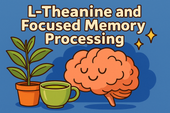
L-Theanine and Focused Memory Processing
Science is the art of curiosity and precision — a quest to understand the unseen patterns that shape life. From molecules to galaxies, every discovery begins with observation, imagination, and the courage to ask “why.” 🔬💡
-
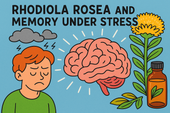
Rhodiola Rosea and Memory Under Stress
Stress clouds memory, slows thinking, and drains energy — but the good news is, the brain can recover. By understanding how stress affects focus and emotion, we can learn to regulate it, restore clarity, and protect long-term cognitive health. 🌿🧠
-
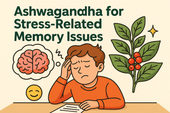
Ashwagandha for Stress-Related Memory Issues
Adaptogens are nature’s answer to modern stress. These powerful herbs — like Ashwagandha, Rhodiola, and Holy Basil — help balance cortisol, support calm focus, and strengthen the body’s resilience, bringing the mind back to harmony. 🌿🧘♀️
